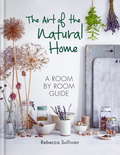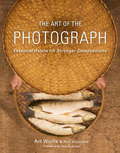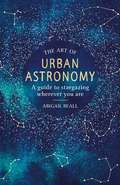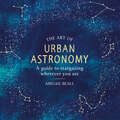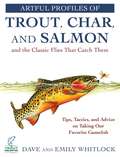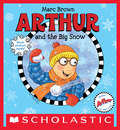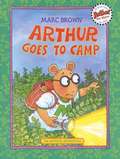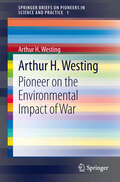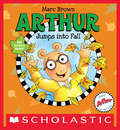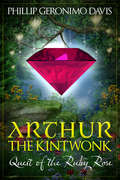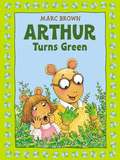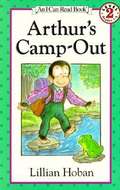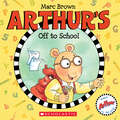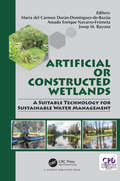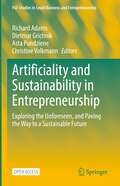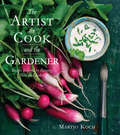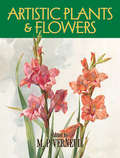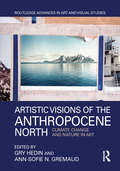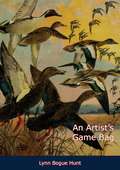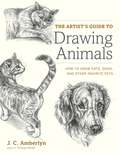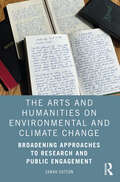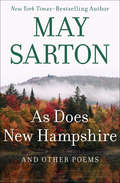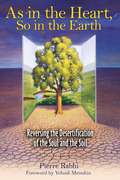- Table View
- List View
The Art of the Natural Home
by Rebecca SullivanThis book is perfect for those interested in sustainability, natural products and mindfulness. It's all about taking the time to create your own homemade products, from facemasks to floor polish and from medicinal honey to massage oil. Taking inspiration from her grandmother's generation, Rebecca Sullivan has put together this thoughtful and appealing manual to caring for yourself and your home. Traditional methods are resurrected or updated to suit the modern home, using simple, natural ingredients.The first part of the book is dedicated to the Home, and covers cleaning products for every room, recipes for pickles and preserves, and tips on everything from natural laundry treatments to how to grow your own cocktail garden. The second part covers Health & Beauty, and includes bath salts, make up, serums, perfumes and even beard oil, as well as healing remedies such as burn salves and herbal teas. This inspiring guide is a must for anyone interested in living a simpler, more purposeful life.
The Art of the Photograph
by Rob Sheppard Inc. Art Wolfe Dewitt JonesFeaturing more than 200 of master photographer Art Wolfe's stunning images, The Art of the Photograph helps amateur photographers of all levels break bad habits and shatter common yet incorrect assumptions that hold many photographers back and, transforming your photography in the process. This is Wolfe's ultimate master class, sharing the most important insights and techniques learned in four decades of award-winning photography. Along with co-author Rob Sheppard, Wolfe challenges us to stop focusing on subjects we feel we should photograph and instead, to "see like a camera sees," seek out a personal point of view, and construct stunning, meaningful images. You'll also learn how to:· Reexamine prejudices that define (and limit) what you photograph· See beyond the subject to let light and shadow lead you to the right image· Find inspiration, including the story behind Wolfe's own photographic journey.· Use formal art principles to build more compelling images.· Choose the right camera and lens for the image you see in your mind's eye.· Recognize the 10 deadly sins of composition--and how to avoid them.· ...and even get a behind-the-lens look at Wolfe's equipment and workflow.
The Art of Urban Astronomy: A Guide to Stargazing Wherever You Are
by Abigail BeallDid you know that stars are seasonal? That Orion is one of the brightest constellations? That a single day on Venus is longer than an entire year on Venus? Space has captivated mankind since the beginning of time. Fifty years ago, Neil Armstrong became the first man to step on the moon and since then our knowledge of astronomy has continued to expand. With so many mysteries yet to be solved, science journalist Abigail Beall takes readers on an astonishing journey though the landscape of space. In The Art of Urban Astronomy, you will be guided through the seasons and learn about the brightest stars and constellations, the myths and legends of astronomy and how to identify star clusters and galaxies with just your eyes or a pair of binoculars. For urban dwellers wrapped up in the rush and bustle of the city, it can be calming and truly valuable to take the time simply to stop, look and reconnect with nature. Packed full of seasonal star charts, constellation charts and fascinating facts, this is the perfect guide for those who have looked up at the night sky and don't know where to begin. After reading this book, you'll never look up in the same way again.
The Art of Urban Astronomy: A Guide to Stargazing Wherever You Are
by Abigail BeallDid you know that stars are seasonal? That Orion is one of the brightest constellations? That a single day on Venus is longer than an entire year on Venus? Space has captivated mankind since the beginning of time. Fifty years ago, Neil Armstrong became the first man to step on the moon and since then our knowledge of astronomy has continued to expand. With so many mysteries yet to be solved, science journalist Abigail Beall takes readers on an astonishing journey though the landscape of space. In The Art of Urban Astronomy, you will be guided through the seasons and learn about the brightest stars and constellations, the myths and legends of astronomy and how to identify star clusters and galaxies with just your eyes or a pair of binoculars. For urban dwellers wrapped up in the rush and bustle of the city, it can be calming and truly valuable to take the time simply to stop, look and reconnect with nature. Packed full of seasonal star charts, constellation charts and fascinating facts, this is the perfect guide for those who have looked up at the night sky and don't know where to begin. After reading this book, you'll never look up in the same way again.
The Art of Urban Astronomy: A Guide to Stargazing Wherever You Are
by Abigail BeallDid you know that stars are seasonal? That Orion is one of the brightest constellations? That a single day on Venus is longer than an entire year on Venus? Space has captivated mankind since the beginning of time. Fifty years ago, Neil Armstrong became the first man to step on the moon and since then our knowledge of astronomy has continued to expand. With so many mysteries yet to be solved, science journalist Abigail Beall takes readers on an astonishing journey though the landscape of space. In The Art of Urban Astronomy, you will be guided through the seasons and learn about the brightest stars and constellations, the myths and legends of astronomy and how to identify star clusters and galaxies with just your eyes or a pair of binoculars. For urban dwellers wrapped up in the rush and bustle of the city, it can be calming and truly valuable to take the time simply to stop, look and reconnect with nature. Packed full of seasonal star charts, constellation charts and fascinating facts, this is the perfect guide for those who have looked up at the night sky and don't know where to begin. After reading this book, you'll never look up in the same way again.
Artful Profiles of Trout, Char, and Salmon and the Classic Flies That Catch Them: Tips, Tactics, and Advice on Taking Our Favorite Gamefish
by Dave Whitlock Emily WhitlockIt is with passion and clarity that Dave Whitlock describes trout, salmon, char, and how to fly fish for them. Artful Profiles of Trout, Char, and Salmon and the Flies That Catch Them is a collection of articles spanning Whitlock's career, all of which are essential reading for any fly-fisher. Over the past fifty years, he has amassed an incredible amount of knowledge and written a large number of articles, many of which appeared in Trout magazine and are featured within. Here, Whitlock deftly, accessibly, and thoroughly goes through a vast range of topics, including:Insights into the many subspecies of trout, char, and salmon Casting methods for every scenario Drawing out shy fish Types of flies for different waters and situations Accurately imitating food sources And much more! Discover a wealth of information consolidated by an experienced and devoted angler. Artful Profiles of Trout, Char, and Salmon and the Flies That Catch Them is absolutely packed with tried-and-true tips, tactics, and techniques that are presented concisely alongside colorful illustrations by Whitlock himself. This book is a must have for anyone with an interest in angling, whether they are an absolute beginner, or an experienced angler with years under their belts.
Arthur and the Big Snow
by Marc BrownEveryone’s favorite aardvark is back in a wonderful winter tale—from the creative producer of PBS’s Peabody and Emmy Award-winning TV series.It’s the perfect snow day, and Arthur is excited to spend it with his friends. But because his little sister D.W. is too small, he has to wait for the snow plow to come by. Arthur waits so long, his friends have finished sledding! Will his snow day get any better? With a little help from Dad, Arthur realizes some things are worth waiting for.
Arthur Goes to Camp
by Marc BrownPoor Arthur. He and the boys can't seem to do anything right at Camp Meadowcroak. Awful food, poison ivy, and losing to the girls in every sport are more than he can take. Arthur plots to run away just as the other campers plot to win the big scavenger hunt against their archrivals at Camp Horsewater. What happens when the two schemes collide makes a rousing finale to a funny, reassuring picture book. Arthur Goes to Camp brings more good laughs and learning to the growing number of Arthur fans.
Arthur H. Westing: Pioneer on the Environmental Impact of War (SpringerBriefs on Pioneers in Science and Practice #1)
by Arthur H. WestingSince the 1960s the environment has become an issue of increasing public concern in North America and elsewhere. Triggered by the Second Indochina War (Vietnam Conflict) of 1961-1975, and further encouraged by the International Conference on the Human Environment, held in Stockholm in 1972, the environmental impact of war emerged and grew as a topic of research in the natural and the social sciences. And in the late 1980s this led additionally to a focus and debate on environmental security. Arthur Westing, a forest ecologist, was a major pioneer contributing and framing both of those debates conceptually, theoretically, and empirically, starting with Harvest of Death: Chemical Warfare in Vietnam and Cambodia (1972) (co-authored with wildlife biologist E.W. Pfeiffer and others). As a Senior Researcher at the Stockholm and Oslo International Peace Research Institutes (SIPRI and PRIO), and as a Professor of Ecology at Windham and Hampshire Colleges, Westing authored and edited books on Ecological Consequences of the Second Indochina War (1976), Weapons of Mass Destruction and the Environment (1977), Warfare in a Fragile World: Military Impact on the Human Environment (1980), Herbicides in War: the Long-term Ecological and Human Consequences (1984), Environmental Warfare: a Technical, Legal and Policy Appraisal (1984), Explosive Remnants of War: Mitigating the Environmental Effects (1985), Global Resources and International Conflict: Environmental Factors in Strategic Policy and Action (1986), Cultural Norms, War and the Environment (1988), Comprehensive Security for the Baltic: an Environmental Approach (1989), and Environmental Hazards of War: Releasing Dangerous Forces in an Industrialized World (1990) --- as well as authoring numerous UN reports, book chapters, and journal articles. This volume combines six of his pioneering contributions on the environmental consequences of warfare in Viet Nam and in Kuwait, on the environmental impact of nuclear war, and on legal constraints and military guidelines for protecting the environment in wartime
Arthur Jumps into Fall
by Marc BrownArthur the aardvark can’t leave well enough alone in this autumn adventure—from the creative producer of PBS’s Peabody and Emmy Award-winning TV series.Arthur has a big job to do: raking all of the leaves in the backyard. He tries to focus, but jumping in the leaves is way more fun than raking them. How will he ever finish? Arthur will need some help from his friends for this task!
Arthur the Kintwonk: The Quest of the Ruby Rose
by Phillip Geronimo DavisArthur the Kintwonk is a story about a reluctant Kintwonk, an ancient race from outer space, who is deemed to be the next King of the Kintwonks. His quest is to take a bag of rubies to the hall of the Mountain Fring. He is weylead by skullduggers, Pirates, Pimps and a host of other Neer do wells. He is aided and abetted by a host of friends from Mother Earth and Outer Space. Failure to succeed would change the world and doom Mankind forever.
Arthur Turns Green
by Marc BrownArthur is full of ideas when it comes to doing his part to save the planet. But is he actually turning green? Arthur comes home from school and begins sneaking around the house, taking notes and talking about a Big Green Machine. D.W. is suspicious of her brother's weird behavior, and when Arthur shows up late for dinner with green hands, she really gets the creeps! Will the Big Green Machine get her, too? Find out how Arthur's secret project convinces his entire family to turn green! Get to know your favorite aardvark all over again in the first new Arthur Adventure in nearly a decade!
Arthur's Camp Out (An I Can Read Book)
by Lillian HobanBored with spring vacation, Arthur decides to go alone on an overnight field trip in the woods behind his house.
Arthur's Off to School (Arthur [brown] Ser.)
by Marc BrownEveryone's favorite aardvark, Arthur, is back in this exciting reissue -- just in time for school!Everyone's favorite aardvark, Arthur, is back in this exciting reissue -- just in time for school!Arthur and his friends are getting ready for school! Get a sneak peek at every character's morning routine, from Francine preparing for recess to the Brain searching for his lost lizard. D.W. wishes she could join in the fun, but she's still too young for school. Can she find her own way to help Arthur get ready? Part of an exciting new seasonal 8x8 Arthur publishing re-release with Scholastic, sure to engage and delight a whole new generation of Arthur fans!
Artificial or Constructed Wetlands: A Suitable Technology for Sustainable Water Management
by María del Durán-Domínguez-de-Bazúa Amado Enrique Navarro-Frómeta Josep M. BayonaArtificial or constructed wetlands are an emerging technology particularly for tropical areas with water scarcity. For big cities, the sustainable management of water resources taking into account proper use is always challenging. The book presents case studies illustrating the above. As plants and microorganisms are a fundamental part of the correct functioning of these systems, their contribution to the degradation of the organic matter and to the removal and transformation of the pollutant compounds present in the wastewaters is also a highlight of this book.
Artificiality and Sustainability in Entrepreneurship: Exploring the Unforeseen, and Paving the Way to a Sustainable Future (FGF Studies in Small Business and Entrepreneurship)
by Richard Adams Dietmar Grichnik Asta Pundziene Christine VolkmannThis open access edited volume explores the past, present, and future of artificiality and sustainability in entrepreneurship – the unforeseen consequences and ways to advance to a sustainable future. In particular, it connects artificiality, sustainability and entrepreneurship, intertwining artificial with the specific phenomenon of those novel digital technologies that provoke continuous and significant change in our lives and business. Unlike digital entrepreneurship research, which focuses on digital technology development and management, this book covers processes and mechanisms of sustainable adaptability of entrepreneurs, the business logic of start-ups, and the collaborative behaviours under the mass digital transformation, including the prevalence of artificial intelligence. Some of the questions that this book answers are as follows: How has entrepreneurship reacted to such challenges previously? What lessons have been learned and need to be carried forward? How can entrepreneurship and the artefacts of entrepreneurship respond to current challenges? What should be the mindset of the entrepreneur to assure sustainable adaptation? How to embrace and embed the new business logic?
The Artist, the Cook, and the Gardener: Recipes Inspired by Painting from the Garden
by Maryjo KochCreative recipes and celebrations of seasonal bounties—in the garden, in the kitchen, and on the canvas. Artist Claude Monet took inspiration from his gardens and the lily ponds at Giverny. Van Gogh, Manet, Matisse, and Cezanne created still life masterpieces of fruit and flowers. Similarly, cooks from Julia Child and Alice Waters to Patricia Wells and Jamie Oliver have taken culinary inspiration from homegrown or fresh local produce. Now artist Maryjo Koch explores this centuries-old connection in a new cookbook inspired by her studio garden. The garden not only provides the artistic subjects she and her students paint, but also serves as the culinary toolbox for the delectable and visual feasts she prepares for her family, guests, and painting classes throughout the year. Artists, cooks, and gardeners alike will find tips, recipes, and painting projects centered on seasonal food pairings. For example, the winter garden focuses on soups with offerings like Minestrone with Crumbled Bacon and Butternut Squash-Apple Soup. Springtime brings culinary attention to leafy greens such as Flower Petal Salad and Spring Asparagus Frittata with Peas and Peppers. As the seasons’ bounty progresses, the painting subjects and menus change as well, invented with whatever is freshest and most beautiful in the garden. Whether you find yourself more at home with an artist’s brush, a cook’s wooden spoon, or a gardener’s spade, you’ll find inspiration inside this lavish cookbook.
The Artist, the Cook, and the Gardener: Recipes Inspired by Painting from the Garden
by Maryjo KochCreative recipes and celebrations of seasonal bounties—in the garden, in the kitchen, and on the canvas. Artist Claude Monet took inspiration from his gardens and the lily ponds at Giverny. Van Gogh, Manet, Matisse, and Cezanne created still life masterpieces of fruit and flowers. Similarly, cooks from Julia Child and Alice Waters to Patricia Wells and Jamie Oliver have taken culinary inspiration from homegrown or fresh local produce. Now artist Maryjo Koch explores this centuries-old connection in a new cookbook inspired by her studio garden. The garden not only provides the artistic subjects she and her students paint, but also serves as the culinary toolbox for the delectable and visual feasts she prepares for her family, guests, and painting classes throughout the year. Artists, cooks, and gardeners alike will find tips, recipes, and painting projects centered on seasonal food pairings. For example, the winter garden focuses on soups with offerings like Minestrone with Crumbled Bacon and Butternut Squash-Apple Soup. Springtime brings culinary attention to leafy greens such as Flower Petal Salad and Spring Asparagus Frittata with Peas and Peppers. As the seasons’ bounty progresses, the painting subjects and menus change as well, invented with whatever is freshest and most beautiful in the garden. Whether you find yourself more at home with an artist’s brush, a cook’s wooden spoon, or a gardener’s spade, you’ll find inspiration inside this lavish cookbook.
Artistic Plants and Flowers (Dover Fine Art, History of Art)
by M. P. VerneuilFrom one of the biggest names in Art Nouveau design comes this splendid visual encyclopedia of superior artistic studies of plants and flowers. Its 120 images were selected from a rare, century-old, four-volume set of botanical illustrations. Cherry blossoms, clematis, crown imperial, and other specimens appear side by side in full-page plates that contrast magnificent color renditions with meticulous black-and-white drawings.A leading designer in the Art Nouveau movement, M. P. Verneuil was particularly interested in the decorative potential of flowers, and he created countless realistic and imaginative floral patterns. In this collection, he spotlights the work of such popular artists as Alphonse Mucha, M. Méheut, and other distinguished illustrators. Captions identify each image. A very useful, wide-ranging reference, this volume will delight artists and lovers of botanical illustration.
Artistic Visions of the Anthropocene North: Climate Change and Nature in Art (Routledge Advances in Art and Visual Studies)
by Gry Hedin Ann-Sofie N. GremaudIn the era of the Anthropocene, artists and scientists are facing a new paradigm in their attempts to represent nature. Seven chapters, which focus on art from 1780 to the present that engages with Nordic landscapes, argue that a number of artists in this period work in the intersection between art, science, and media technologies to examine the human impact on these landscapes and question the blurred boundaries between nature and the human. Canadian artists such as Lawren Harris and Geronimo Inutiq are considered alongside artists from Scandinavia and Iceland such as J.C. Dahl, Eija-Liisa Ahtila, Toril Johannessen, and Björk.
An Artist’s Game Bag
by Lynn Bogue HuntAmerica’s leading bird painter has pictured every game bird, both upland, wild fowl and shore birds—including the predatory hawks and owls—found in the United States.This book not only represents a unique collection of the art of Lynn Bogue Hunt—including the finest work he has ever done—but is an ornithologically correct guide to American game birds.This superb collection is beautifully illustrated with drawings and painting.
The Artist's Guide to Drawing Animals: How to Draw Cats, Dogs, and Other Favorite Pets
by J. C. AmberlynCreate Classic Portraits of Favorite PetsThe Artist's Guide to Drawing Animals continues the rich tradition of animals in art. In this step-by-step guide to rendering your favorite animals in pencil and pen-and-ink, J. C. Amberlyn combines her love of pets and other familiar domestic creatures with her beautiful, detailed drawing style. Covering a variety of animals from beloved pets like dogs and cats to barnyard critters like cows and sheep and many more, the book covers every species with easy-to-follow instructions for drawing them from every angle imaginable. Along with seven featured examinations of Amberlyn's artistic process, each chapter showcases the tools and techniques needed to produce your own highly detailed, lifelike drawings of a variety of well-known animal companions. The worlds of artists and animal lovers come together in this richly illustrated, in-depth guide to producing charming portraits of some of the most popular pets and domesticated creatures.Also available as an eBookFrom the Trade Paperback edition.
The Arts and Humanities on Environmental and Climate Change: Broadening Approaches to Research and Public Engagement
by Sarah SuttonThe Arts and Humanities on Environmental and Climate Change examines how cultural institutions and their collections can support a goal shared with the scientific community: creating a climate-literate public that engages with environmental issues and climate change in an informed way. When researchers, curators, and educators use the arts and humanities to frame discussions about environmental and climate change, they can engage a far wider public in learning, conversation, and action than science can alone. Demonstrating that archival and object-based resources can act as vital evidence for change, Sutton shows how the historical record, paired with contemporary reality, can create more personal connections to what many consider a remote experience: the changing climate. Providing valuable examples of museum collections used in discussions of environmental and climate change, the book shares how historic images and landscape paintings demonstrate change over time; and how documentary evidence in the form of archaeological reports, ships logs, Henry David Thoreau’s journals, and local reports of pond hockey conditions are being used to render climate data more accessible. Images, personal records, and professional documents have critical roles as boundary objects and proxy data. These climate resources, Sutton argues, are valuable because they make climate change personal and attract a public less interested in a scientific approach. This approach is underused by museums and their research allies for public engagement and for building institutional relevancy. The Arts and Humanities on Environmental and Climate Change will be most interesting to readers looking for ways to broaden engagement with environmental and climate issues. The ideas shared here should also act as inspiration for a broad spectrum of practitioners, particularly those writing, designing, and curating public engagement materials in museums, for wider research, and for the media.
As Does New Hampshire: And Other Poems
by May SartonMay Sarton's exquisitely rendered tribute to her home state Over the course of her career, May Sarton wrote on a range of topics and places in both prose and poetry, and traveled across the world in search of new subjects. There is, however, one place that she always returned to in the end: Nelson, New Hampshire. Written in honor of the town's bicentennial, As Does New Hampshire follows the course of a year in this rural hamlet. Sarton gracefully describes the ever-present role of nature, which always reminds humans that their presence on earth is temporary. She conveys both the beauty and the difficulty of a New England winter, and the full bloom of spring and summer. Above all, though, As Does New Hampshire is a lasting tribute not only to Sarton's home, but to the greater concept of home found in the heart of every reader.
As in the Heart, So in the Earth: Reversing the Desertification of the Soul and the Soil
by Pierre Rabhi Yehudi MenuhinThe world’s leading expert on reversing soil desertification shows how ecology can flourish only when spiritual elements are present• Uses a parable from the African oral tradition to provide a living testimony of what has been lost with the rise of modern technology• Provides a vital account of the strong relationship between soil and soul and how this relationship can be restoredAs in the Heart, So in the Earth is a strong indictment of a civilization that, while seeking domination over the earth, mutilates, tortures, and desacralizes it. For Pierre Rabhi ecology is inseparable from spirituality. He shows how the growing desertification of North Africa is a reflection of the “desert” that is claiming the hearts and souls of the inhabitants of the Western world--how dead soil is mirrored in our deadened souls--and how reconciliation with Mother Earth must be accompanied by relearning our ancestors’ reverence for the soil.Using a traditional African parable grounded in the very wisdom of the earth, Pierre Rabhi seeks to initiate the reader into a time when the people that dwelled on this planet did so harmoniously and could converse easily with the land. Village elder Tyemoro recounts the gradual destruction of his village’s culture and all that has sustained it as the miracles promised by modern technology brought more harm than good. This same drama is recurring throughout the world, where indigenous value systems that have endured for millennia are torn apart by contact with modern civilization. Yet Rahbi offers hope--if those in the modern world will stop to hear the words of their ancestors who worked the land, for our destiny is linked irrevocably to that of the earth.
